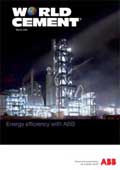Editorial comment
She stood in line, one of hundreds outside the Stanford International Bank in St John’s, the capital of Antigua, and she was anxious. “Where have my savings gone? How am I going to pay my bills?”
Register for free »
Get started now for absolutely FREE, no credit card required.
She stood in line, one of hundreds outside the Stanford International Bank in St John’s, the capital of Antigua, and she was anxious. “Where have my savings gone? How am I going to pay my bills?” The TV journalist nodded and smiled sympathetically before moving to another local resident, an elderly man. “I’m retired and if my money is all gone, how am I going to live?” And so it would have continued had the journalist moved on down the line, but it was a switch back to the studio newsreader and on with more news about the demise of Sir Allen Stanford’s empire and the probe into the US$8 billion scandal surrounding him. The Stanford empire stretches from Houston, Texas, down through Central and Latin America and across the Caribbean, embracing businesses not only in that region but also far away from the Americas. Investors and depositors have been hit, while donations to US politicians made during the US presidential election have been or are hastily being transferred into charities. Stanford’s sporting interests in sailing, tennis, cricket, polo and golf (including the AT&T National Tour Event hosted by Tiger Woods) will be severely affected and probably cancelled. After the Bernard Madoff scandal, and all the machinations that rocked the world’s banks last year, with famous names such as Bear Sterns, J P Morgan Chase, Fannie May and Freddie Mac in deep trouble, the question has to be, where or what next?
One of the banks caught up in the malaise, and one that had to be bailed out to the tune of US$20 billion by the US government, is Bank of America. This was essential to preserve the Bank’s existence following its merger with Merrill Lynch when it was discovered that Merill Lynch had massive trading losses. What would Amadeo Giannini have made of all this? This philanthropic businessman born in California, the son of Italian immigrants, founded the Bank of Italy in 1904, basically to serve the needs of the Italian immigrant community that resided in San Francisco’s North Beach neighbourhood. In 1906, following the devastating earthquake and fire that virtually destroyed San Francisco, he immediately stepped in and offered loans to businesses to help rebuild the city. Giannini’s bank rapidly expanded as he bought up banks throughout California, eventually ending up with 500 branches. In the late 1920s he approached Orra E. Monnette, President and Founder of another bank, and a merger was agreed in 1929 resulting in a new bank. That bank was Bank of America. Considered to be the founder of America’s modern banking practice, Giannini nurtured the film and wine industries in California, and bought bonds to help finance the Golden Gate Bridge, among many other ventures. After the Second World War he arranged loans to help rebuild the Fiat factories in Italy. Time magazine named him as one of America’s Titans. All this and a lot more, but with no recorded mention of any scandal...


